“What made me want to move here?” Tawny skin crinkles around a wry smile, following a shake of sun-bleached dreadlocks. “Well… this is my commute,” says British surf instructor Ellis Knight as he sweeps a sinewy arm out of our tuk-tuk towards the paddy fields.
In the lush green, the only movement is a strutting peacock, the flicking tails of a few buffalo and a fisherman hefting his bamboo stilt on his shoulder. Bathed in the syrupy morning light, we trundle along in a cloud of dust, strands of tinsel and holograms of Hindu gods winking on the dashboard, surfboards stacked on the roof. “I wake up every day excited about going into the office,” the 34-year-old adds.
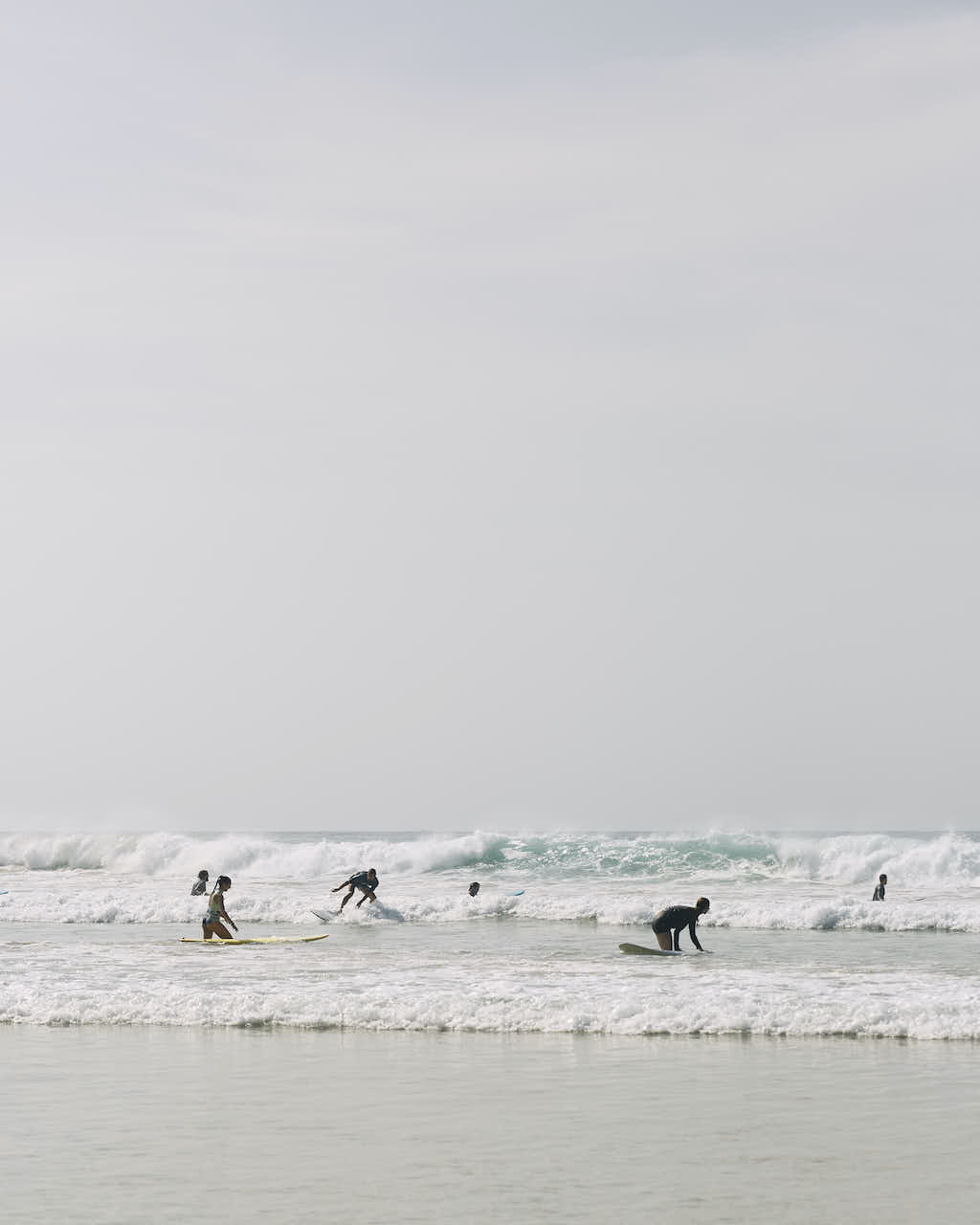
It’s understandable, considering that Knight’s “office” turns out to be the golden-sand beaches and unrivalled surf breaks surrounding Ahangama, a sleepy fishing village on Sri Lanka’s south coast. There are arguably no guidebook-worthy sights here, unlike Galle with its Unesco-listed fortifications 40 minutes away; nor does it have a town centre per se, rather a web of capillary-like lanes threading inland off the coastal road.
Instead, it was the barrelling Indian Ocean waves that prompted the arrival of the first boutique hotel back in 2016. Soul & Surf Ahangama opened its doors with the aim of offering week-long wellness retreats, comprised of Knight’s daily surfing lessons, sunrise yoga and communal meals. But where surfers and yogis had beaten a path, now nomadic creatives and ex-corporate escapees are arriving, and a slew of eco-chic hideaways have sprung up among the paddies and bamboo forests. Indeed, Ahangama has quietly become Sri Lanka’s most desirable destination.

“It’s one of those places that seems to really draw people in – especially young, creative, entrepreneurial types, aspiring to a better work-life balance,” says 37-year-old Sarah de Vere-Drummond, who relocated from the United Kingdom to Ahangama in 2019, running her holiday rental company Kip Hideaways remotely. “I’ve been coming here for the past 10 years. Ahangama’s always had these incredible little coves and beautiful Art Deco houses dotted around, but maybe because it’s a bit further from busier places like Unawatuna and Galle, it wasn’t on most people’s radar. It felt like one of those real undiscovered gems – the real deal.”
“It’s one of those places that seems to really draw people in – especially young, creative, entrepreneurial types”
Like its board-wielding, kombucha-sipping denizens, Ahangama is seemingly too cool for the fast-food restaurants or souvenir stalls that line other Southern Province seaside towns. Instead of big-chain resorts, its hotels are small in stature (just four rooms at The Kip and eight at PALM), but big on charm and sustainability.
Their interiors put a minimalist, modern spin on the tropical style: think rattan furnishings, hand-dyed linens and lush potted plants set against backdrops of poured concrete and salvaged timber; with a colour palette of millennial pink, coconut milk-white and jungle green.
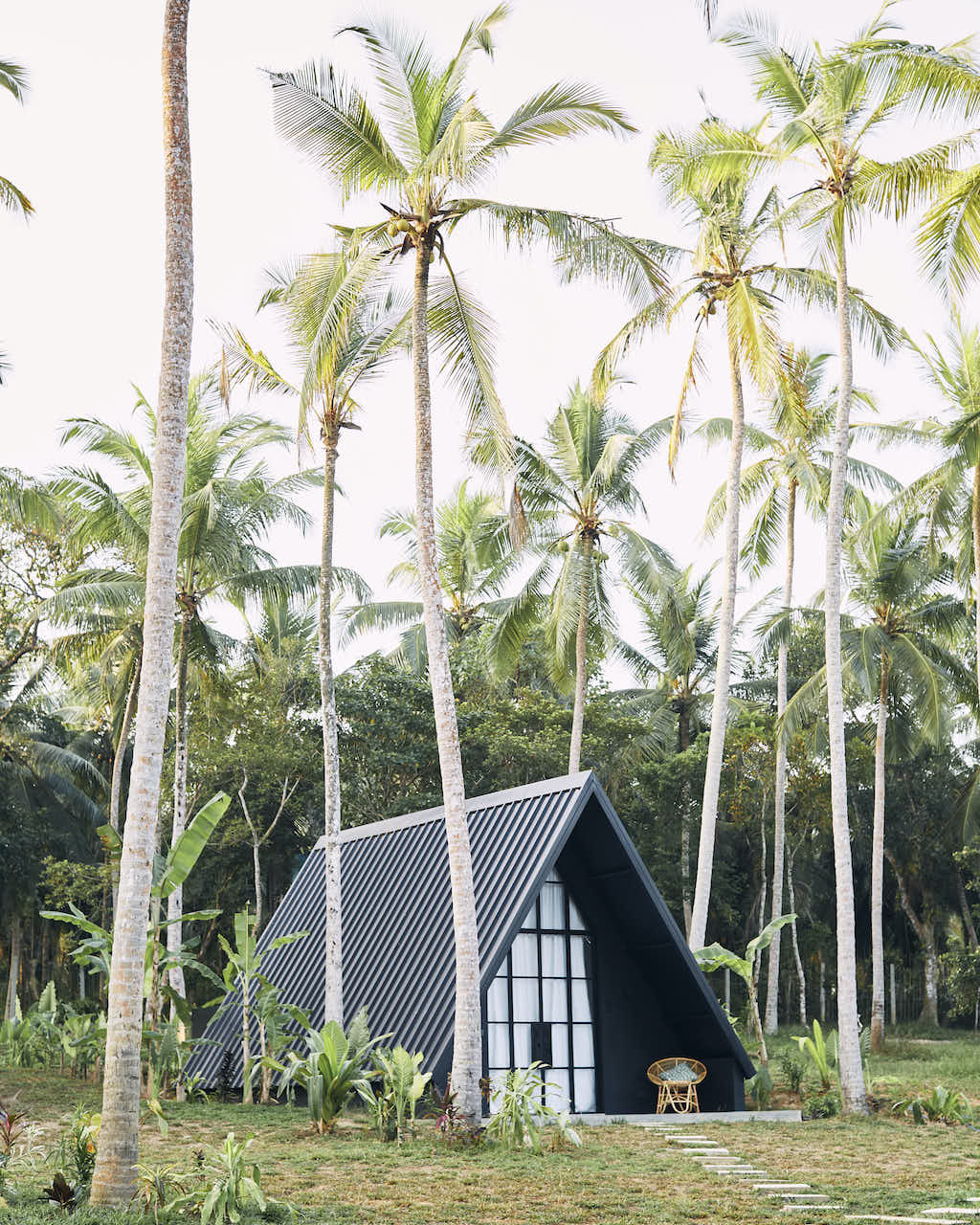
This mix of restored heritage villas and low-rise new builds utilising local materials are tucked away behind whitewashed walls and lie camouflaged among the local homes. Even tuk-tuk drivers sometimes struggle to deposit you outside the correct gate, pausing to check directions with roadside fruit sellers.
“Here, everything’s being developed in an ethical, considered way”
Ahangama’s independent hoteliers are committed to keeping the community’s soul intact. “A lot of them have seen what’s happened in Bali and Tulum when you develop too much, too fast,” says de Vere-Drummond, “So, here, everything’s being developed in an ethical, considered way.”
That means engaging local Sri Lankan craftspeople – adept at basketry, weaving and metalwork – for everything from the buildings themselves to the products stocked in on-site shops, ensuring tourist rupees circle back to locals’ pockets. Staff are nearly all recruited from the area, too. Slow, respectful, artisanal, authentic: these are the words on hotel owners’ lips.
We explore how this mantra has been realised in brick-and-mortar at these four standout properties in Ahangama.
PALM
The new country club
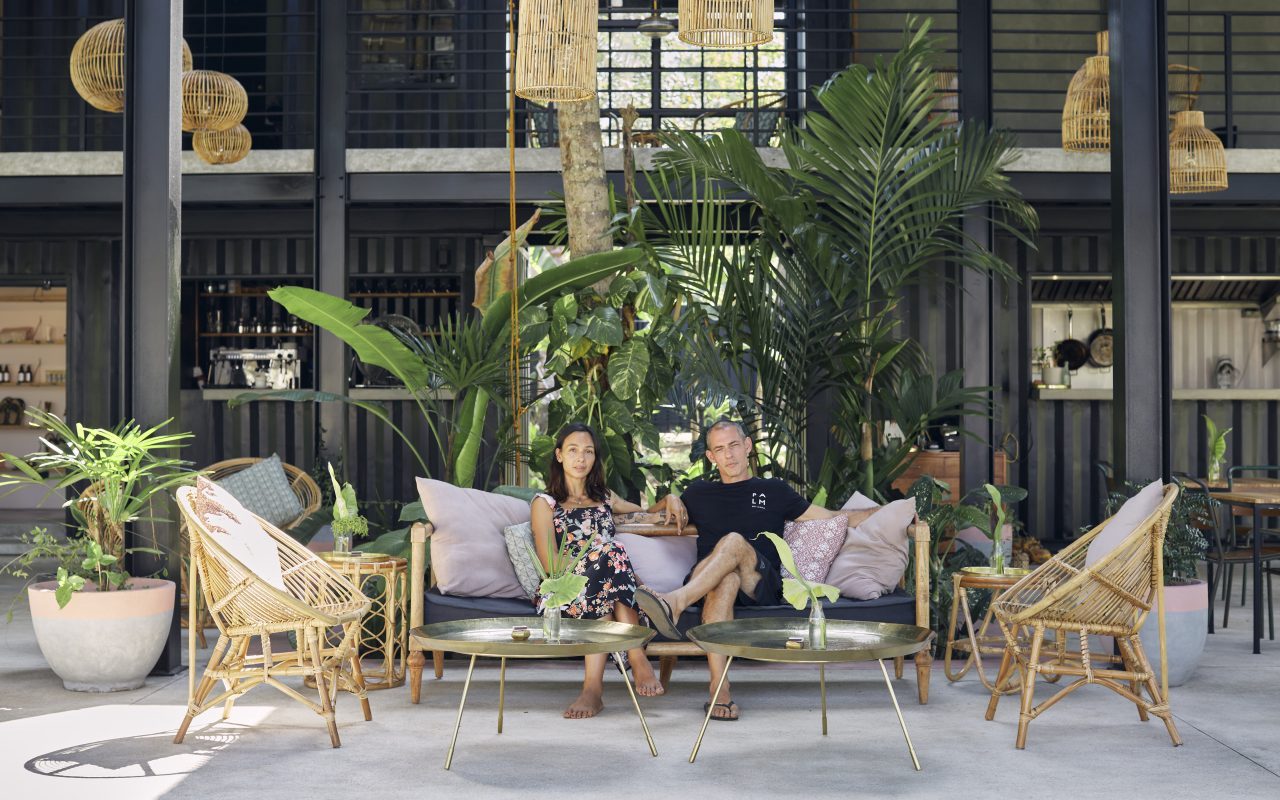
“An overgrown warehouse in the jungle” is how PALM’s co-founder Miriam Haniffa, 35, sums up the hotel’s design concept, as she surveys the metal-framed buildings that have risen on this former coconut plantation. “Maybe something a bit alpine, too,” she adds, with a nod at the six A-frame cabins that house their guest rooms.
The references may seem eclectic, but they make perfect sense when you trace the story of the half-Swiss, half-Sri Lankan Haniffa and her British partner Laurie Spencer, 47, back to their former life in industrial-chic Shoreditch in East London. It was in an urban CrossFit gym of all places – their switch-off from jobs in fin-tech (her) and estate agency (him) – that their dream of “doing something with more time and space for the kids” took shape.
In fact, an on-site gym has become a cornerstone of PALM – complete with powerlifting equipment, pull-up rigs and plyo boxes “so people can come out and train year-round” – as a way to counter the low-season slump that comes with Sri Lanka’s southwest monsoon from May to September.
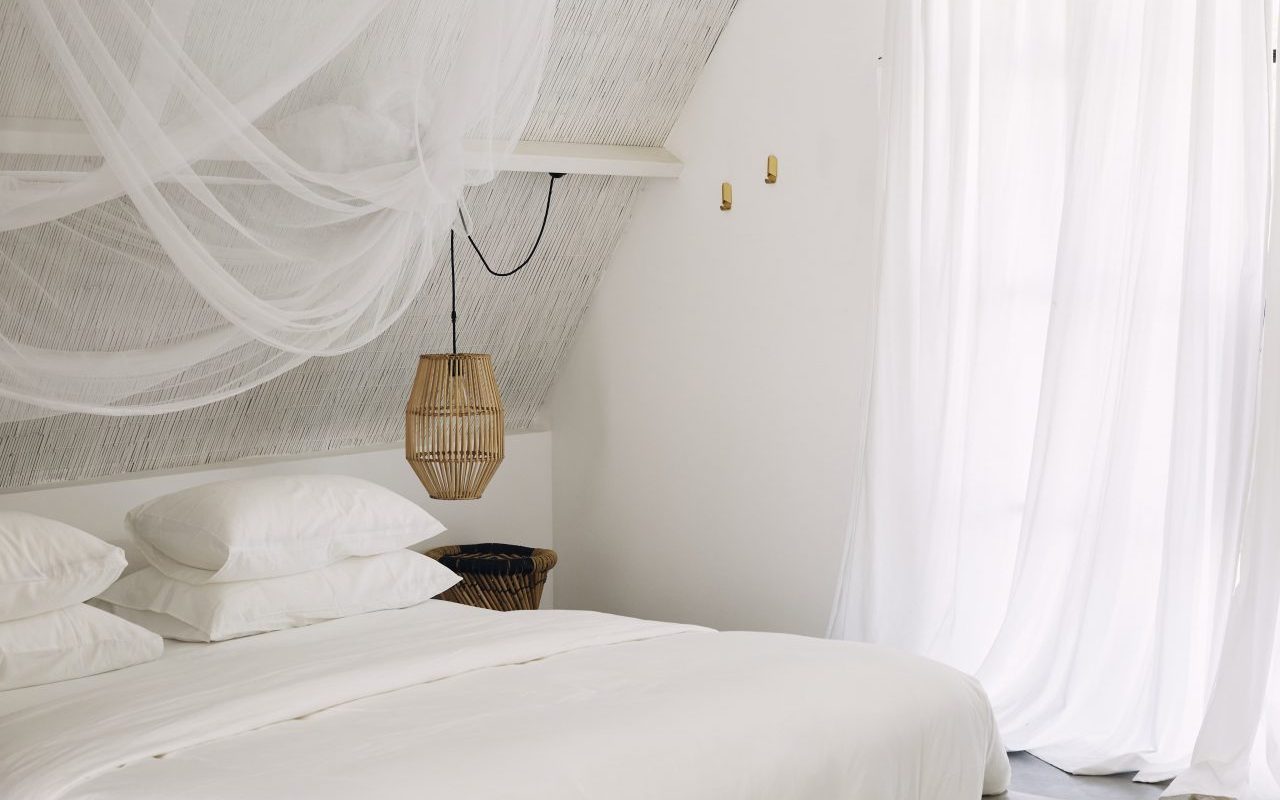
Opened in late 2019, each of the hotel’s minimalist-chic cabanas has its own outdoor bathroom for showers under the stars. Polished-concrete interiors are softened with billowing cotton curtains, whitewashed bamboo cladding and wicker furniture – all custom-made locally. “You tend to come across the right people in an organic, word-of-mouth way here,” Haniffa says. Like local metalworker Jagath Hegoda Gamage, who crafted the hotel’s doorframes and windows. “His tiny workshop was just around the corner from the house we were staying in when the PALM’s build was starting. You’d see him welding these huge frames by the roadside.”
“You tend to come across the right people in an organic, word-of-mouth way here”
At the heart of the property is a sunken swimming pool flanked by a pastel pink feature wall – a magnet for picture posing – and a breezy, hammock-strung clubhouse. Here, a dinky gift shop offers social enterprise products (glass bottles of handmade lemongrass-scented body wash from Colombo-based start-up Green Pearl, alongside postcards by local charity SeaSisters, which teaches local girls how to surf and swim) while the all-day kitchen serves up locally grown fusion food such as buffalo-milk gnudi (a type of gnocchi-like dumpling) and pickled pumpkin salad.
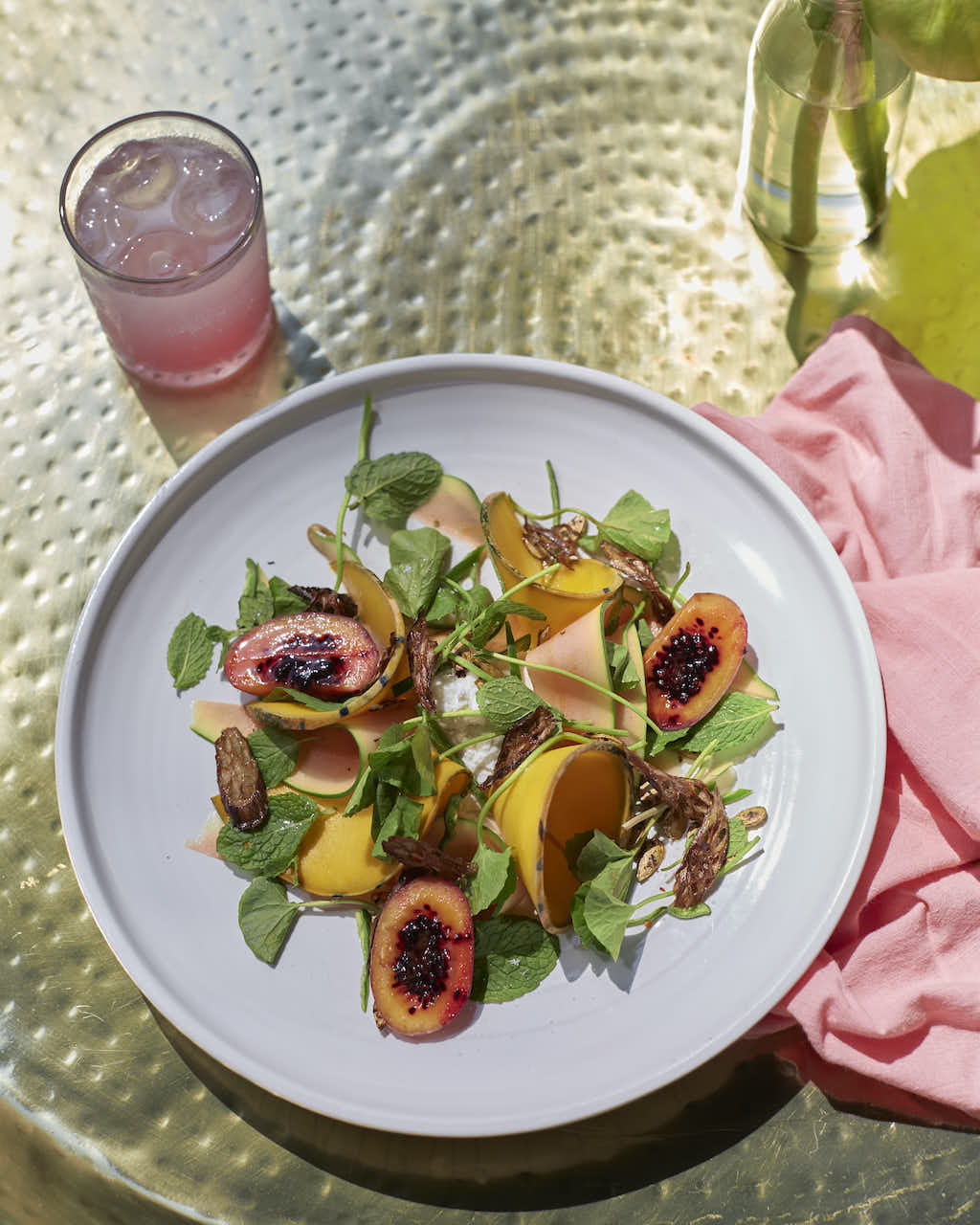
“The idea was to bring that casual environment that you get in hostels but blended with high-end design and amenities,” Haniffa explains, her two-year-old daughter Billie clambering onto her lap as we sip house-made lime and rosewater cordials on the poolside swing-seats. “And we have such lovely people staying here, lots of creatives – art directors, photographers, architects. That really contributes to the atmosphere of the place.”
The Kip
The community trendsetter

The metallic whirr of the coffee machine, mellow house beats and laughter bubbling in dappled light – Sunday brunch is in full swing in The Kip’s garden café. Wooden platters piled with turmeric lattes, chia puddings and buffalo milk burrata are whisked away by servers to reclaimed wood tables, while rescue pup Delilah dozes beneath a jackfruit tree.
The scene is exactly what Phoebe Taylor, 35, and Seddy Di Francesco, 30, envisaged four years ago when they took “a gamble” on a dilapidated, colonial-era bungalow, after viewing more than 100 houses. “If someone wants big five-star luxury, they’re never going to book us, which is fine,” Taylor shrugs. “We’re definitely niche.”
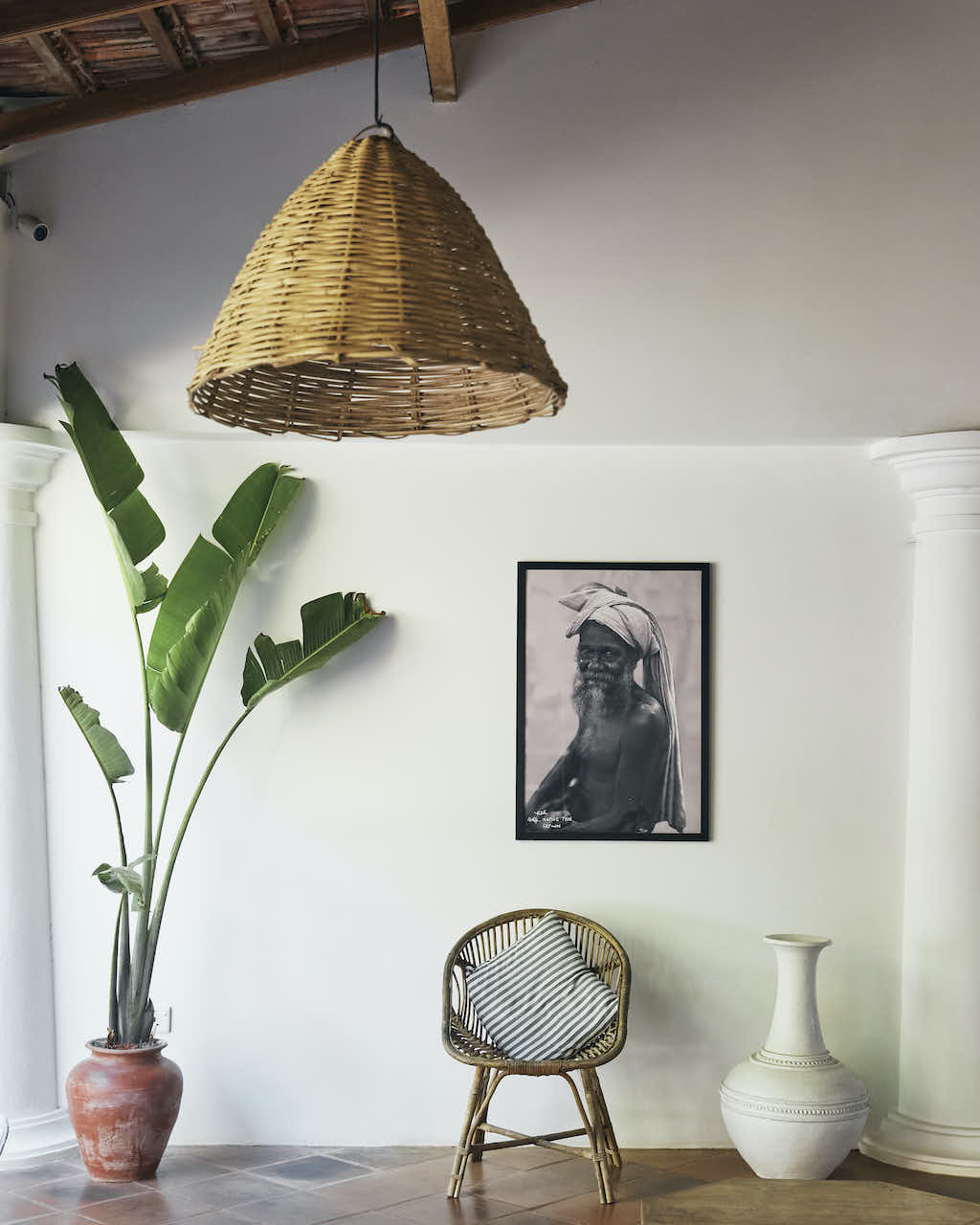
It’s hard to picture Sydney-born Taylor’s previous incarnation as a “burnt-out” advertising executive, as she bounces around The Kip’s incense-scented courtyard in denim dungarees. Practically every object that her huge ocean-blue eyes land on has a tale behind it: “These lampshades were actually wicker baskets – you couldn’t buy a lot of things here when we moved over from Australia, so being very innovative was essential,” she says.
The antique rattan daybeds, the rope swing – nothing makes it on the dusky-pink walls or terracotta-tiled floor without careful consideration. “Ahangama is paradise, a real pocket of authenticity. That’s why we’re so conscious of integrating into the community: we don’t sell alcohol to respect our neighbours; we didn’t even put a sign outside.”
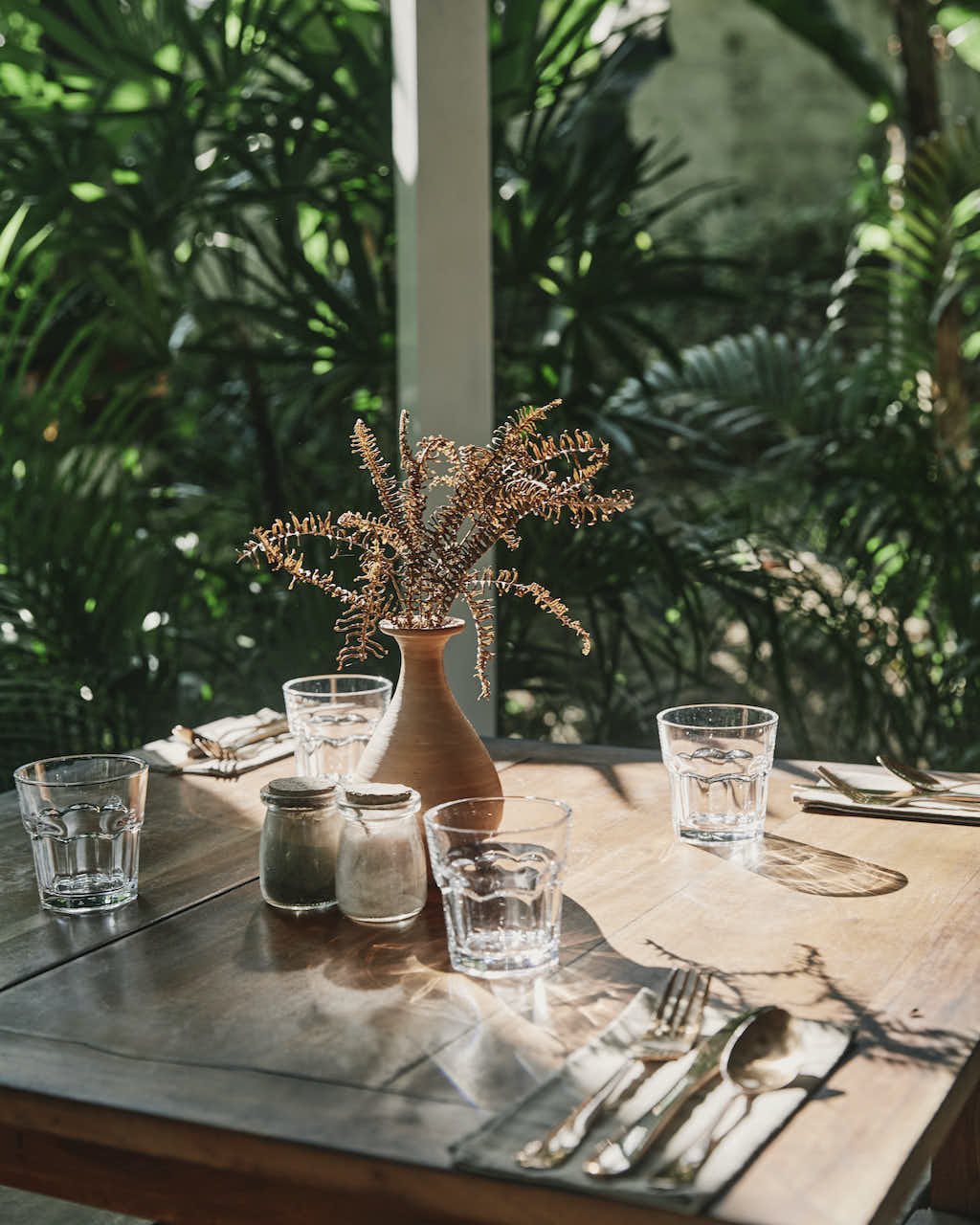
From solar-heated water right down to the bin liners (paper) and straws (bamboo), sustainability is deeply ingrained into The Kip, too. A vegetable patch located out back fuels the café’s predominantly plant-based menu, the latest crop of plump tomatoes adorning Di Francesco’s homemade pastas – a nod to his Italian roots. “Phoebe wants to get chickens next, but I’m not so sure: a mongoose got the last ones,” he laughs.
“It’s definitely been a labour of love… Sri Lanka breeds creativity. You just have to have patience”
“It’s definitely been a labour of love,” she grins. “But even when things took six times longer, we picked the harder route to stay in line with our vision, and it’s more rewarding for that. Sri Lanka breeds creativity. You just have to have patience.”
Abode Ahangama
The Deco hideaway
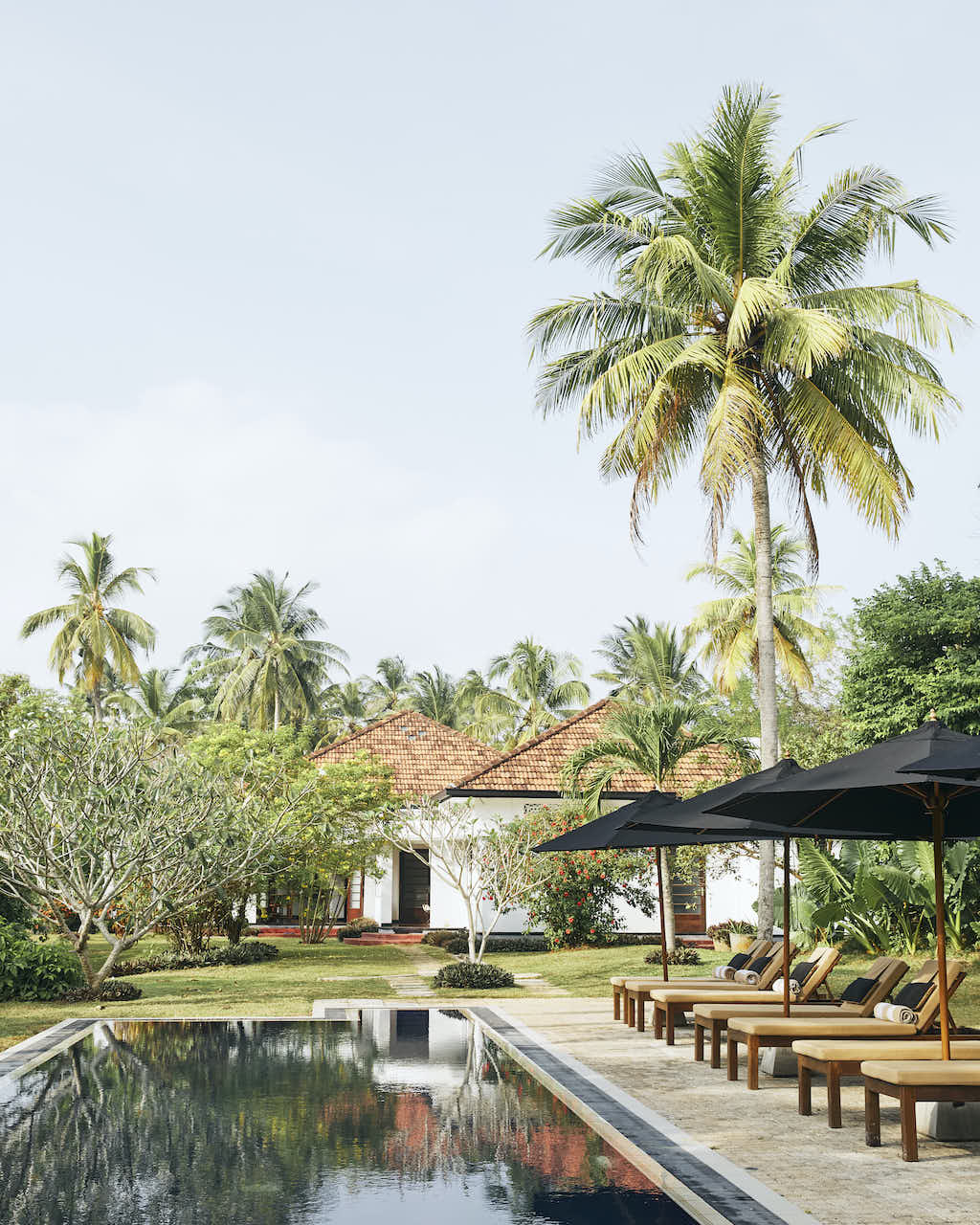
After launching Abode Bombay, which bills itself as one of Mumbai’s first socially responsible luxury boutique hotels, Indian entrepreneur Abedin Sham, 37, had Sri Lanka in mind for a sequel. “The island had a lot of big, five-star and ultra-luxury offerings – the ecosystem seemed ripe for our sort of ‘anti-chain’ guesthouse, aimed at travellers who want a local vibe without fuss and top-tier prices.”
“Ahangama has a quaint and quiet feel about it. It’s still up and coming”
But it was only through visiting friends who’d built a holiday home in Ahangama that he found the perfect setting for Abode Ahangama. “The south coast’s main beach resorts seemed a little overrun with typical tourist offerings, whereas Ahangama has a quaint and quiet feel about it. It’s still up and coming, with a number of little local cafés and restaurants popping up.”
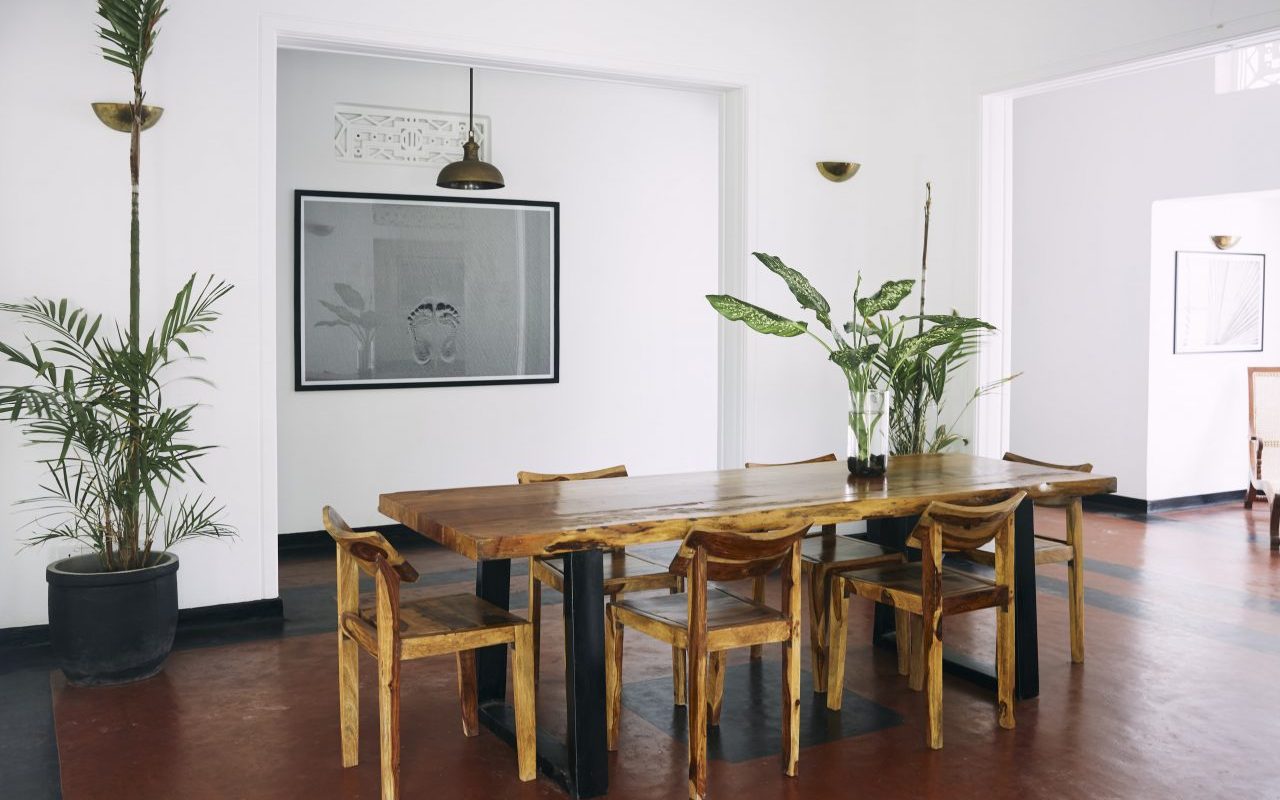
He settled on a four-bedroom, 1950s Art Deco villa on the next lane along from The Kip and opened in early 2019. “It’s only 200m from the beach, but you’ve got more space,” Sham says of the tranquil, frangipani-filled grounds and the single-story building – terracotta roof atop whitewashed walls and a west-facing veranda – that make up the hotel. “It had bags of charm already, so we restored the interiors very carefully.”
Manager Aslam Mohamed, 34, pads across wine-red terrazzo floors, pointing to doorknobs, window frames and lighting sconces – “all part of the original house”– alongside a framed, hand-drawn map of Ahangama illustrating the team’s favourite spots (Mohammed was born just three villages away) and “vintage finds” such as teak deckchairs. He explains to me that one of Abode’s philosophies is “nothing new, and as local as possible.”
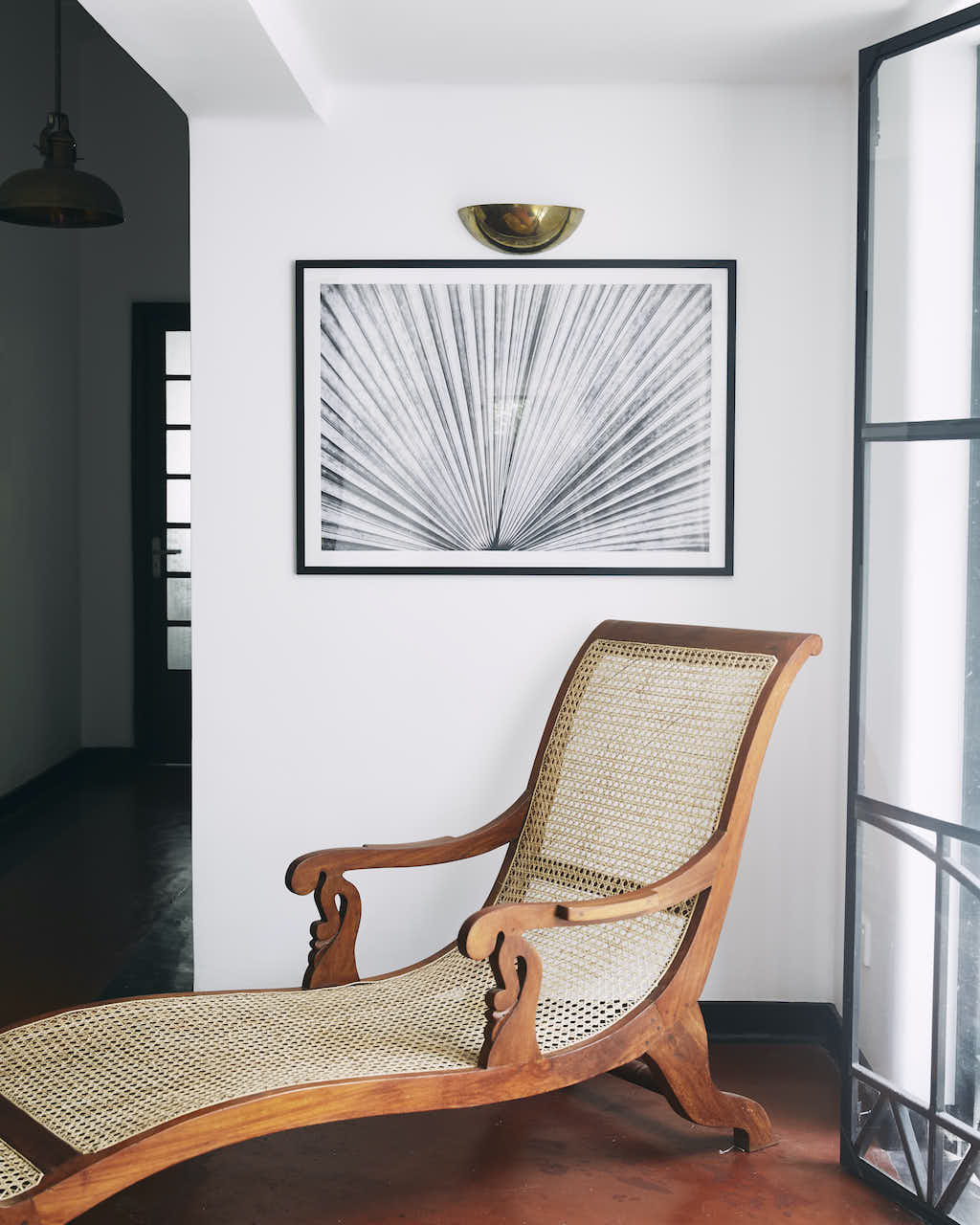
And it doesn’t get much more local than the bespoke wrought-iron bedframes that furnish the hotel’s four guest rooms. “We just happened to ask around and found our neighbour, Darathna, doing some quality work right across from us,” says Sham. “He also made our wardrobes, towel racks and outdoor gym areas. The wooden parts of the bed are by the village carpenter, Majula Liyenge.” For the finishing touches, the beds are draped in cottons by Indian handloom collective No-Mad and hung with dreamcatchers.
Back in the living room, a guest chats with the resident massage therapist about her surf-sore muscles at a large, central dining table. Mohammed rests his hands on the polished dark wood: “This is where our guests gather and have breakfast together, something like egg hoppers and fresh fruit smoothies. It’s very communal, like a private home, a family.”
Harding Boutique Hotel
The architectural statement

Peer among the coconut groves on Ahangama’s main beach and you’ll find a sleek cube of ribbed hardwood and granite taking shape: Harding Boutique Hotel is the latest arrival on the local hotel scene that’s scheduled for an autumn 2020 opening. While this new build may look sleeker than its neighbours – check out the wraparound balconies with sea-facing outdoor bathtubs – it still rises no higher than the surrounding palm trees and comprises only six airy, white suites.
Don’t be fooled by the Australian accent of founder Paul Harding, either: this project marks a personal homecoming. His mother’s family hails from Sri Lanka, including great-uncle Gem Milhuisen, one of the country’s first hoteliers. “I made my first trip to Sri Lanka at 13 with my grandfather, Dennis Milhuisen – Gramps, we called him,” Harding recalls. “That visit really shaped me as a teenager and taught me a lot about my Sri Lankan heritage. I knew then I wanted to follow in Uncle Gem’s footsteps and operate a hotel one day. It’s in my blood. Two generations on, here I am.”

What form this hotel took, however, he didn’t foresee at the time. “My vision was for a low-lying hotel set on open land. I’d visited over 35 plots, all of which were landside. I’d pretty much given up hope.” Then, the local agent mentioned a seven-perch (roughly 175m²) beachside plot in Ahangama. “I said ‘don’t bother’: seven perch is considered too small to even build on in Sri Lanka. But it was on our way home, so we hopped out at a little alleyway entrance and walked down. My mum and I simply looked at each other and said, ‘Oh my god. This is it.’”
“It’s about passive design: being visually calm among the wild surroundings, a natural openness and permeability”
Designed by Jonathan Ashmore of UK-UAE firm ANARCHITECT, the building follows the principles of Tropical Modernism, a style pioneered by Sri Lanka’s mid-century architect-extraordinaire Geoffrey Bawa, which adapts the geometric, minimal forms of European Modernism to local context and resources. “It’s about passive design: being visually calm among the wild surroundings, a natural openness and permeability,” explains Ashmore of the aesthetic. At the hotel, traditional indoor-outdoor boundaries are punctured to maximise natural ventilation and sunlight – the most thrilling example being a floating, open-air staircase draped in lush foliage through the building’s core.

Harding, whose previous businesses include a bakery and florist in Melbourne, continues to emphasise the nostalgic connections in the hotel restaurant, filling the menu “with things from my childhood, like Nana’s paan rolls, lamprais (curries and rice baked inside banana leaves), green chilli pickle and homemade milk toffee.” And as for the building’s panoramic rooftop bar, peeping above the surrounding trees, what could be a more fitting name than Mr M.? That is, Mister Milhuisen, also known as Gramps.
SEE ALSO: The rise of Sri Lanka’s female surfers
The post The stunning boutique hotels of Sri Lanka’s Ahangama appeared first on SilverKris.
from SilverKris
No comments:
Post a Comment